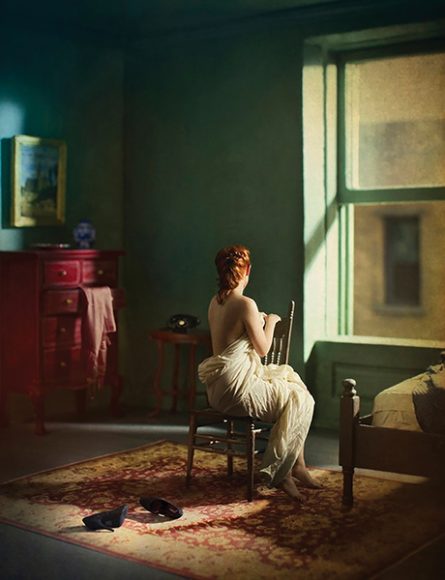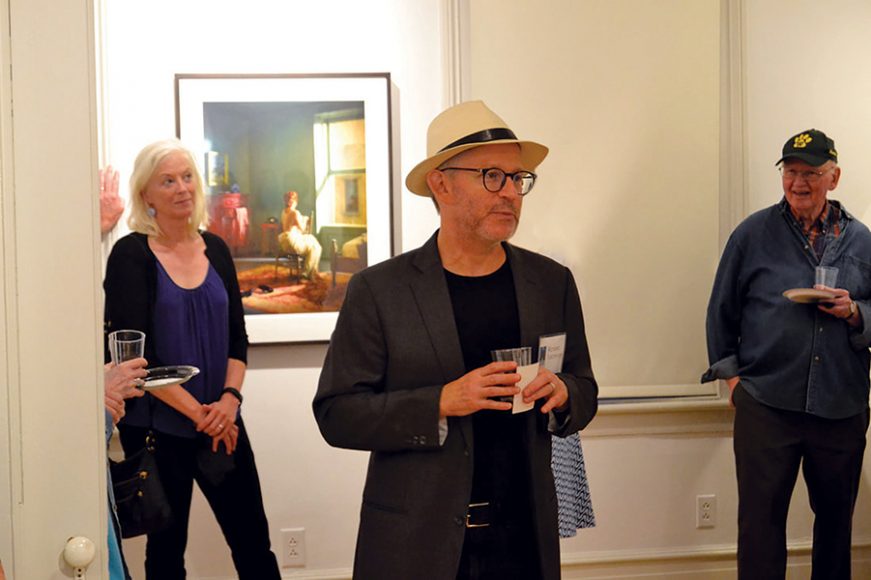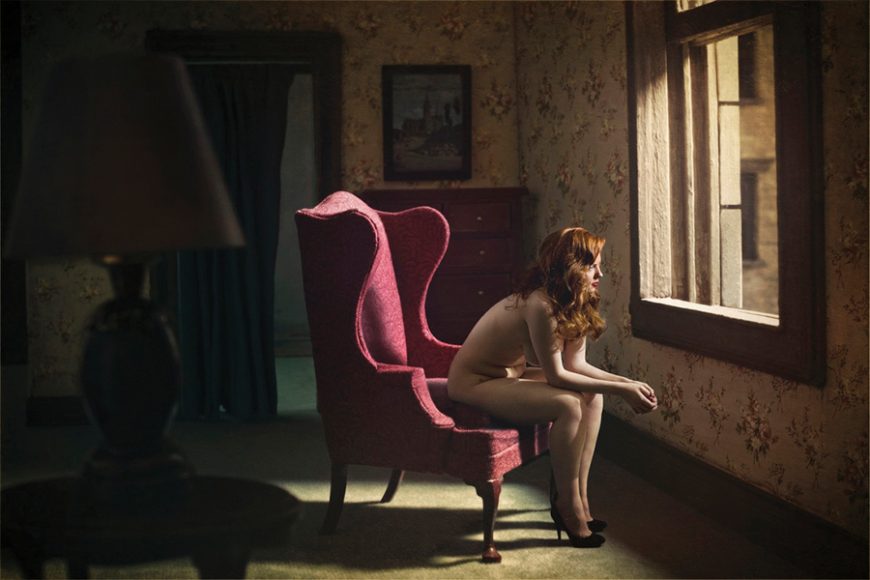A set of a dozen photographs on display in the exhibition room at Nyack’s Edward Hopper House Art Center certainly fits in at the former home of the painter whose tableau-like canvases defined the solitary in early-to-mid 20th- century America.
The time period in each photo matches when Hopper created many of his most famous works. The images’ compositions and lighting create a sense of quietude that fit Hopper’s style. But the photographs aren’t actually from that period at all. They were created almost a century after Hopper’s death, using technology that would have seemed alien to the painter.
“Hopper Meditations,” the series of photographs and digital illustrations by New York City-based photographer Richard Tuschman, pays homage to Hopper’s work by creating fictional scenes influenced in subject and mood by some of the artist’s iconic paintings.
“I have always loved the way Hopper’s paintings, with an economy of means, are able to address the mysteries and complexities of the human condition,” Tuschman wrote in a description of his work for the online photography magazine LensCulture.
Tuschman created the images by handcrafting small, but incredibly detailed, dioramas that match Hopper tableaux. He then Photoshopped live models, including himself, into each scene.
Tuschman’s work is now placed prominently just a floor beneath Hopper’s childhood bedroom, where the artist himself once drew inspiration from the Hudson River view out his window and the way the light slanted across the room — a distinctive feature of many of his canvases.
The house was built by his grandfather in 1858 and served as his home from his birth in 1882 until 1910. After Hopper’s death in 1967, the house was saved from demolition and turned into a nonprofit art center.
When Tuschman first started on “Hopper Meditations” in 2011, he was trying to recreate certain Hopper paintings exactly. But then he shifted to focusing more on capturing the essence of Hopper’s works.
“I was less concerned about imitating the details and more concerned about the general mood,” he says.
Tuschman finished the final photographs in 2013. He described the process as two days of photography and two years of everything else. He worked with two different models on the photo shoots, getting all the material he needed from two separate shoots.
But the most labor-intensive part was creating the dioramas. With the exception of some dollhouse furniture, everything in the dioramas was built entirely by Tuschman.
Getting the lighting right, to match that of Hopper’s slicing style, was especially important, he says.
“I loved the way he used light, it was almost acting like another character,” Tuschman adds.
In Tuschman’s work, time — Hopper’s time — becomes another character as well.
“It’s an era I’ve always been interested in,” Tuschman says. “I think it’s because it’s really my parents’ era. The first time I really fell in love with photography was as a kid looking at my parents’ family photo albums. Because these were people I knew, but it seemed like a different world in a way. There was this kind of tension between distance and familiarity.”
Tuschman lived for a time in Rockland County near the Hopper House and had an unrelated show of paintings there previously. While the work has already garnered quite a bit of attention online, including features in Slate, the Huffington Post and LensCulture, he says it was exciting to see “Hopper Meditations” displayed in Hopper’s original home.
“They did such a beautiful job installing the show,” Tuschman says. “And it’s great to show it right in his house.”
Richard Tuschman will be back at the Edward Hopper House Art Center Oct. 22 for a talk presented by The Nyack Library. He will discuss the inspiration and process behind the “Hopper Meditations” (through Oct. 29) and will have on hand one of the diorama sets used in the series. For more, visit edwardhopperhouse.org and richardtuschman.com.






